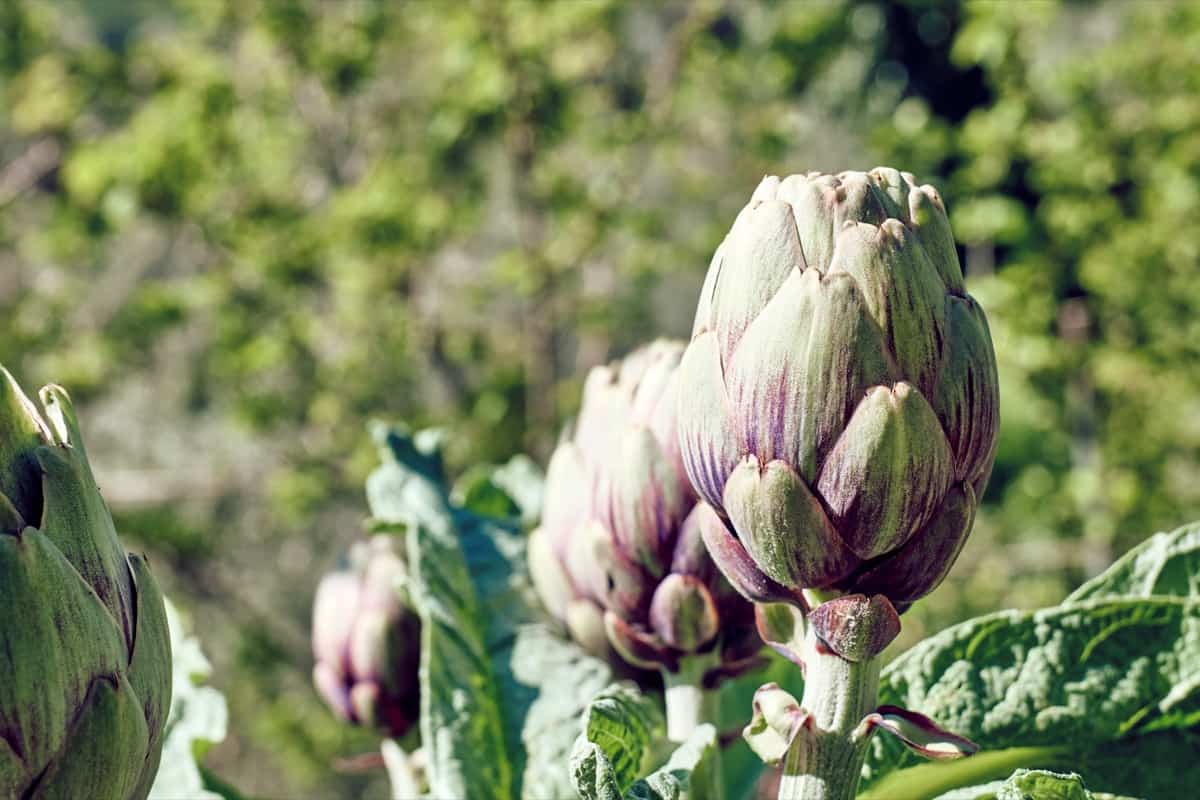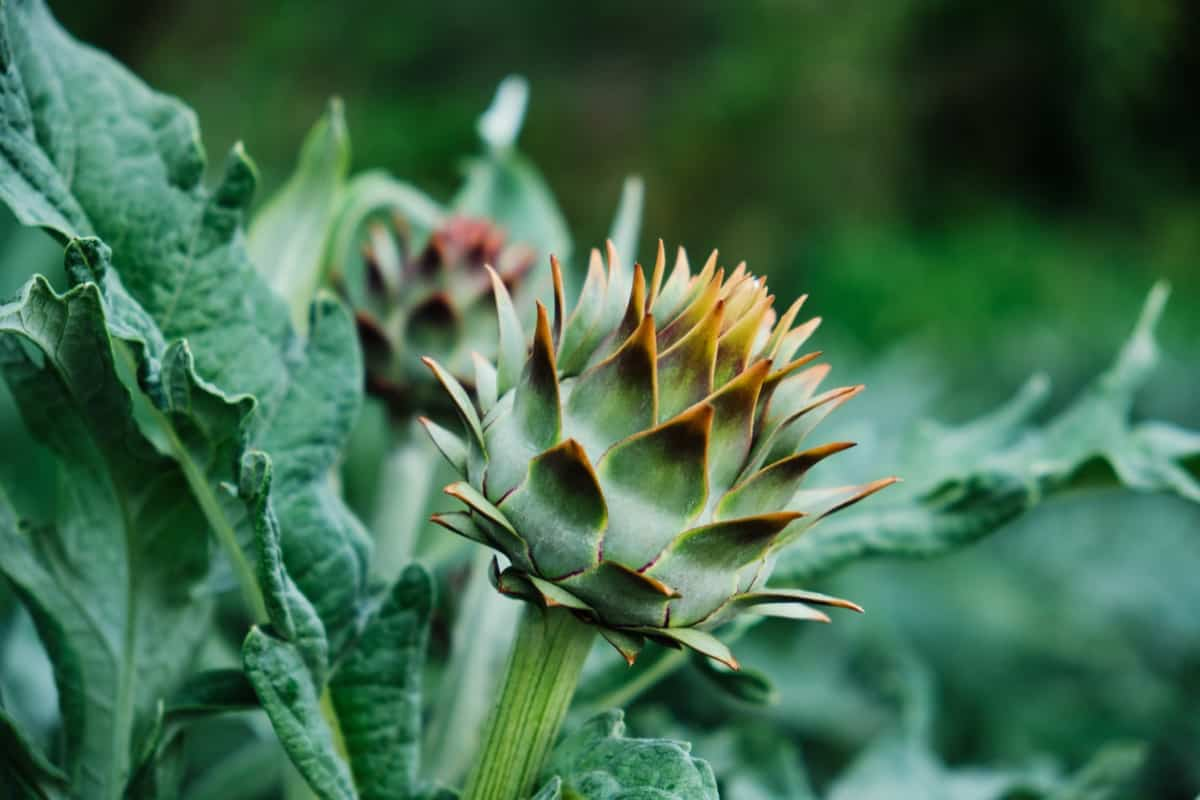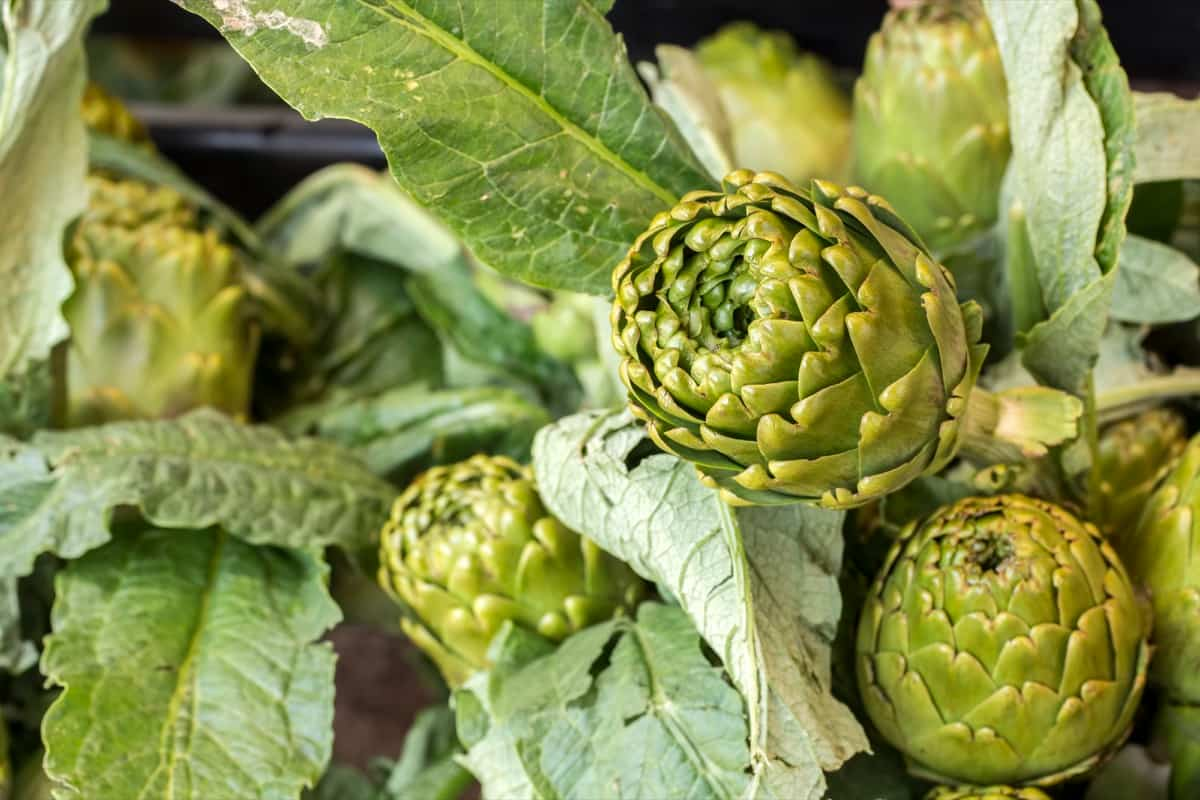Artichoke, scientifically known as Cynara scolymus, is an intriguing and delicious vegetable. Artichoke plants are not immune to the pesky pests that plague gardens. Understanding the common culprits and the damage they can cause is essential for effective pest management. One of the most common pests that attack Artichokes is the aphid. These insects suck sap from the leaves, causing them to curl and distort.

Another notorious offender is the Artichoke plume moth, whose larvae feed on young flower buds, leaving behind unsightly holes. The Artichoke bud weevil is another pest to watch out for. The symptoms of Artichoke pests are laying eggs in developing flower buds, resulting in stunted growth and damaged produce.
Additionally, snails and slugs love feasting on tender Artichoke foliage, leaving telltale slime trails as evidence of their presence. Identifying Artichoke pests early on is crucial for effective control. Look out for curled or distorted leaves, holes in flower buds, stunted growth, or slimy trails as signs of infestation. Artichoke farmers use products with malathion, pyrethrins, neem oil, and insecticidal soaps (always ask your local licensed agronomist).
Soil Management Strategies for Reducing Artichoke Pest Populations
By focusing on improving the health and fertility of the soil, you can create an environment that is less favorable for pests to thrive. It’s important to maintain proper nutrient levels in the soil. Conduct regular soil tests to determine deficiencies or imbalances and amend accordingly with organic fertilizers or compost.
Crop rotation is another effective strategy to control Artichoke pests naturally. Avoid planting Artichokes in the same spot year after year, as this can lead to a buildup of pest populations in the soil. Practicing good weed control can greatly control Artichoke pests naturally. Weeds provide shelter and food sources for many common Artichoke pests. Regularly remove weeds from your garden beds by hand or using natural methods like mulching or hoeing.
Creating a Pest-Resistant Environment for Artichokes: Tips and Techniques
First and foremost, start with healthy plants to control Artichoke pests naturally. Strong, vigorous plants are better equipped to withstand attacks from pests. Ensure that your Artichokes receive proper nutrition and water regularly. Consider using row covers or netting to physically control Artichoke pests naturally from flying insects like aphids or moths.
These barriers act as a physical shield against unwanted visitors while still allowing sunlight and air circulation. Additionally, interplanting companion plants that repel pests can be beneficial. Marigolds, dill, and mint are known for their ability to deter common Artichoke pests like aphids and caterpillars.
Companion Planting for Natural Pest Control in Artichoke Gardens
It is a natural and effective way to control pests in your Artichoke garden. One popular companion plant for Artichokes is the marigold. These vibrant flowers add beauty to the garden and help deter nematodes, aphids, and beetles that may attack your Artichoke plants. Planting marigolds around the perimeter of your Artichoke patch can act as a barrier against these pesky pests.
Another great companion plant to get rid of Artichoke pests is borage. This herb attracts beneficial insects such as bees and syrphid flies that feed on aphids notorious for damaging Artichoke leaves. The presence of borage in your garden can help keep aphid populations under control naturally. Additionally, planting mint near your Artichokes can discourage flea beetles from munching on their foliage.
Introducing Beneficial Insects to Combat Artichoke Pests
One such beneficial insect to control Artichoke pests naturally is the ladybug. Ladybugs feed on aphids, thrips, and other soft-bodied insects that attack Artichoke plants. You can balance predator and prey by introducing ladybugs into your garden. Another beneficial insect that can be introduced is the green lacewing. They are especially effective against aphids, which often plague Artichoke plants.
In case you missed it: 10 Best Organic Pesticides for Plants in India with Price List

By attracting beneficial insects to your garden through appropriate plant selection and providing habitats like flowering plants, you can naturally encourage their presence and enhance the biological control of Artichoke pests.
Homemade Organic Sprays for Controlling Artichoke Pests
A garlic and chili pepper mixture is a popular homemade spray to control Artichoke pests naturally. This potent concoction can repel aphids, caterpillars, and other common Artichoke pests. Neem oil spray is another homemade treatment for Artichoke pests. This natural pest control for Artichoke can deter chewing insects like beetles and loopers.
If you’re dealing with fungal diseases on your Artichokes, try making a baking soda spray, the best organic pest control for Artichoke. Dissolve baking soda in water and add a teaspoon of liquid soap as an emulsifier. Spray this solution onto affected leaves to help control powdery mildew or rust. Additionally, reapply these homemade sprays after rainfall or heavy watering for optimal effectiveness.
Using Physical Barriers to Protect Artichokes from Pests
Physical barriers are a natural and effective way to protect your Artichokes from pests. These barriers make a physical barrier that controls insects and pests from reaching the plants. One simple method is using lightweight fabric or netting row covers. These covers can be placed over your Artichoke plants, creating a protective shield against pests.
Another option is constructing a fence around your bed to control Artichoke pests naturally. This can be done using materials such as chicken wire or mesh fencing. Ensure the fence is at least three feet high to prevent larger animals from accessing your plants. Remember to regularly monitor these physical barriers for any signs of damage or wear and remove any captured pests promptly.
Implementing Cultural Practices to Prevent Pest Infestations in Artichokes
One important cultural practice to control Artichoke pests naturally is crop rotation. Avoid planting Artichokes or other related crops in the same spot year after year. Rotate them with different plant families to disrupt the pest life cycle and reduce their populations. Another technique is proper spacing between plants. Overcrowding can increase humidity, attracting pests like aphids and slugs. Give your Artichoke plants enough room to breathe and grow without being crowded together. Additionally, practicing good sanitation measures will help keep pest populations under control.
Natural Predators of Artichoke Pests: Encouraging Wildlife in the Garden
One of the most effective and natural ways to control Artichoke pests is by encouraging wildlife in your garden. Many insect predators can help keep pest populations in check, reducing the need for chemical interventions. By creating a welcoming habitat for these beneficial creatures, you can establish a balance that benefits both your Artichokes and the ecosystem as a whole.
Attracting birds to your garden is an excellent strategy for controlling pests. Encouraging beneficial insects like lacewings and praying mantises also contributes to the control of Artichoke pests naturally. These predatory insects consume many pests, including thrips, mites, whiteflies, and caterpillars. Provide sheltered areas such as rock piles or dense vegetation where they can hide during cooler periods.
In case you missed it: How to Control Terrace Garden Pests Naturally: How to Get Rid of Them with Natural and Organic Treatment

Monitoring and Early Detection: Key Steps in Managing Artichoke Pests Naturally
One effective monitoring method to control Artichoke pests naturally is strategically placing yellow sticky traps around the garden. These traps attract flying pests like aphids and thrips, helping you gauge their presence and population size. Additionally, regularly check the undersides of leaves for eggs or larvae that may have been laid by pests such as beetles or caterpillars. Another important monitoring aspect of controlling Artichoke pests naturally is closely monitoring neighboring plants and surrounding vegetation.
If you notice any signs of infestation in nearby crops or weeds, immediately prevent them from reaching your Artichokes. Early detection also involves promptly addressing any issues identified during monitoring. This includes handpicking larger pests like slugs or snails off the plants and disposing of them properly. For smaller insects like aphids or mites, consider using organic insecticidal soaps or natural oils to control their populations.
How to Control Artichoke Pests Naturally: Summary
| Pests | Symptoms | Natural Controls |
| Aphids | Curling leaves, Sticky residue on leaves | Spray plants with a mixture of water and mild dish soap |
| Caterpillars | Holes in foliage | Handpick or use Bt |
| Slugs | Irregular holes | Set up beer traps or sprinkle diatomaceous earth around plants |
| Snails | Silver trails on leaves | Place copper barriers around plants or handpick snails after dark |
| Whiteflies | Tiny white flies fluttering near the plant | Hang yellow sticky traps near infested areas or release predatory insects |
| Thrips | Silver streaks on foliage | Spray with neem oil or insecticidal soap |
| Leaf miners | Hollow tunnels in leaves | Maintain good airflow and remove affected leaves |
In case you missed it: How to Control Strawberry Pests Naturally: How to Get Rid of Them with Natural and Organic Treatment

Conclusion
Pests can wreak havoc on your Artichoke plants, causing damage that affects their appearance and reduces the yield of delicious edible hearts. The most common pests affecting Artichokes include aphids, slugs, snails, caterpillars such as the Artichoke plume moth larvae, and beetles like the Artichoke weevil. By implementing natural pest control methods such as companion planting with insect-repellent herbs or introducing beneficial insects into your garden ecosystem, you can help keep these unwanted guests at bay.
- Deworming Schedule for Dogs/Puppies: A Beginners Guide
- How to Prevent and Control Parasites in Goats
- Beneficial Insects in Pest Management
- Natural Solutions for Pest Control in Flower Gardens
- Types of Fungicides Used in Agriculture
- Common Issues in the Fruit Development Stage of Pomegranate Farming
- Fruit Development Issues in Papaya: Easy Solutions and Treatment
- Soil-Borne Diseases and How to Protect Your Plants
- Practices to Prevent Disease Spread in the Garden